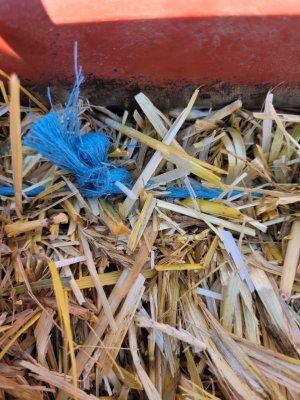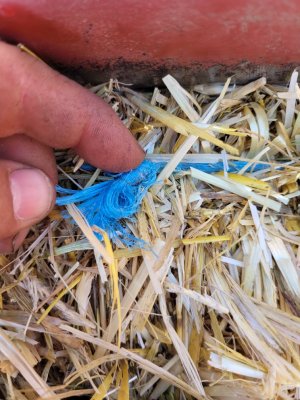Pnw Farmer
Well-known member
Hello again, I've got an interesting knot my baler makes and I'm hoping that somebody here has seen it happen before and where they started at for remedying the problem. The baler is a NH 277, early 70's vintage that I picked up on a whim from an online auction for $1075, I've put a couple hundred in it and baled up around 15 ton so far, so it's already paid for itself. I intend to get the manuals but I bought it right before haying so I have yet to get those in hand. It's only the right side doing it, the left appears to have been rebuilt plus a new needle not too long ago and that side hasn't missed a tie in over 800 bales. It's ran both 210 and 240, neither changes the knot. It began mis tying when I got into some beardless barley hay and it was a nightmare to get finished. The first 150 or so bales were alfalfa/grass to clean the steel up with then around 350 bales of mixed grasses. There were a few broken ones but some of that was slug feeding and we were getting things timed up to begin with.
As soon as I got into the beardless it began breaking bales, kick out 3-8 then pop 1-2 open. Sharpened the twine knife, checked timing, cleared the chamber and cycled by hand (nothing showed up at that slow of speed), slowed down some, sped up some, changed rpm's some just trying to figure out what's going on. The twine is fraying some from the knife discs and we haven't figured out what's causing that, tightening up the discs helped the fraying some but didn't eliminate it. I thought maybe a new needle might help with that as well as there's a pretty deep groove in that side. I'm guessing that something in the bill hook timing is slightly off, it's almost like a slip knot, I haven't pulled on one to see if it pulls the knot free. I've watched slow motion videos to see if something stands out as to why it's not pulling both strands through and cutting them cleanly but if there's first hand knowledge on here of a remedy I'm all ears. Thanks in advance.
Farmer
As soon as I got into the beardless it began breaking bales, kick out 3-8 then pop 1-2 open. Sharpened the twine knife, checked timing, cleared the chamber and cycled by hand (nothing showed up at that slow of speed), slowed down some, sped up some, changed rpm's some just trying to figure out what's going on. The twine is fraying some from the knife discs and we haven't figured out what's causing that, tightening up the discs helped the fraying some but didn't eliminate it. I thought maybe a new needle might help with that as well as there's a pretty deep groove in that side. I'm guessing that something in the bill hook timing is slightly off, it's almost like a slip knot, I haven't pulled on one to see if it pulls the knot free. I've watched slow motion videos to see if something stands out as to why it's not pulling both strands through and cutting them cleanly but if there's first hand knowledge on here of a remedy I'm all ears. Thanks in advance.
Farmer


